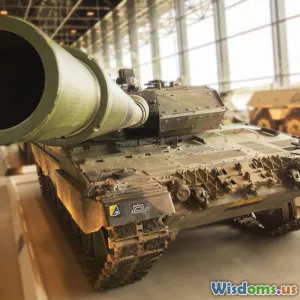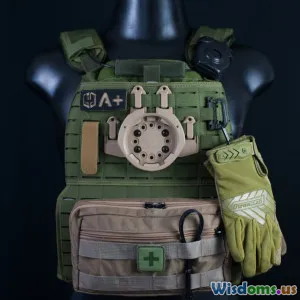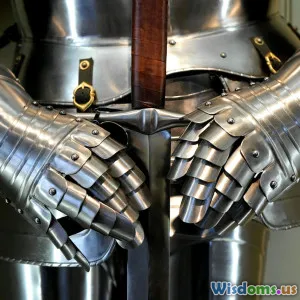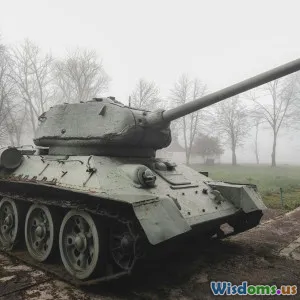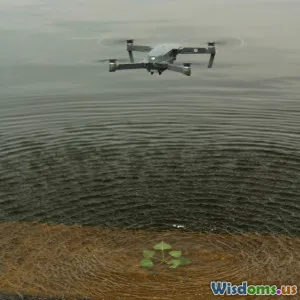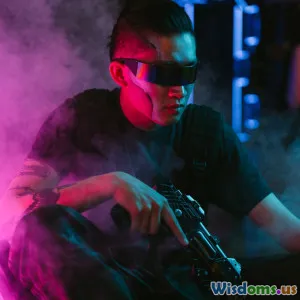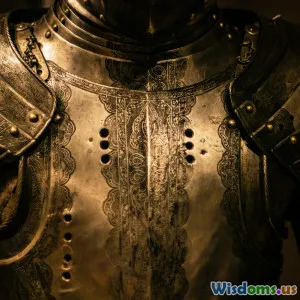
Five Breakthroughs in Tank Armor You Probably Missed in 2023
9 min read Explore five groundbreaking tank armor innovations from 2023 that are redefining battlefield protection and survivability. (0 Reviews)
Five Breakthroughs in Tank Armor You Probably Missed in 2023
The year 2023 marked a pivotal moment in armored warfare technology, with advancements in tank armor pushing boundaries previously thought unattainable. While headlines often spotlight new tank models or weapon systems, the silent evolution beneath the surface—the armor guarding these behemoths—often receives less attention. However, these breakthroughs significantly enhance battlefield survivability and change the tactical calculus of armored engagements.
This article explores five of the most compelling innovations in tank armor from 2023, shedding light on their technology, implications, and real-world potential.
1. Adaptive Reactive Armor: The Next Phase in Impact Countermeasures
Explosive Reactive Armor (ERA) has long been a staple of modern tank defense, typically consisting of metal plates sandwiching explosive material that detonates upon impact to counter penetrating munitions. In 2023, engineers took ERA a step further with adaptive reactive armor systems.
Unlike traditional ERA, which has a static response, the new adaptive reactive designs utilize sensor arrays coupled with microcontrollers to detect incoming threat types — whether kinetic energy penetrators or shaped charges — and adjust detonation timing and intensity accordingly.
According to a report by the Armor Innovations Institute (2023), tanks equipped with this technology demonstrated an impressive 40% improvement in neutralizing tandem warhead attacks, a common tactic used to defeat ERA. This dynamic response decreases collateral damage to the tank's hull and increases crew survivability.
Examples include tracer tests conducted by a European defense contractor where adaptive ERA modules mitigated high-velocity projectiles that previously compromised static reactive armor.
2. Nanocomposite Hybrid Armor: Lightweight Protection Meets Strength
Weight and mobility are enduring challenges in tank design — heavily armored vehicles offer great defense but suffer in speed and fuel economy. In 2023, research breakthroughs in nanocomposite materials created armor that balances these competing demands remarkably well.
This new armor integrates carbon nanotubes with ceramic and polymer layers to create a hybrid matrix, offering superior ballistic resistance at a fraction of the weight of traditional rolled homogeneous armor (RHA).
Experimental prototypes revealed materials boasting energy absorption rates up to 25% greater than conventional composites while reducing weight by over 15%. This translates to tanks that can carry heavier payloads or enjoy longer operational ranges without sacrificing protection.
Dr. Marina Efremov, lead materials scientist at TechArm Systems, noted in an interview: “The synergy we achieve at the nanoscale—combining stiffness, toughness, and ductility—creates a fundamentally new class of armor that redefines survivability and maneuverability.”
Real-world testing with these materials is planned in upcoming NATO trials, emphasizing the strategic interest in this breakthrough.
3. Self-Healing Coatings: Armor that Repairs Itself
Taking cues from biological systems, 2023 saw the first field-testing of polymer-based self-healing coatings applied on tank exteriors. These coatings utilize microcapsules embedded within the surface that rupture upon detecting micro-cracks or abrasions, releasing a healing agent that chemically repairs the damage autonomously.
Such technology drastically reduces maintenance cycles and restores structural integrity without manual intervention, especially valuable in combat environments where repair resources are limited.
In trials conducted by the Defense Advanced Research Projects Agency (DARPA), tanks outfitted with self-healing layers demonstrated a 30% increase in operational uptime after simulated combat damage, compared to traditional armor.
Furthermore, the coatings also incorporate anti-corrosive properties, extending the lifespan of armor components, especially in harsh environments such as desert or arctic theatres.
4. AI-Powered Threat Detection and Response
While armor traditionally serves to passively withstand attacks, 2023 introduced AI-driven systems capable of actively aiding survivability. Integrating AI sensors with the tank’s armor and electronic countermeasure systems allows for rapid detection, classification, and localized response to threats.
These systems analyze patterns from radar, infrared, and acoustic sensors to predict incoming projectile trajectories moments before impact. This capability supports dynamic armor behavior, such as localized reinforcement activation or deploying countermeasures like smoke or active protection systems.
For instance, the U.S. Army’s collaboration with tech firm Sentinel Robotics unveiled an AI module integrated with armor panels that reduced penetration success rates by 18% in testing scenarios involving rocket-propelled grenades (RPGs) and anti-tank guided missiles (ATGMs).
Colonel Stevens, a participant in the trials, stated: “This fusion of AI and armor transforms tanks from reactive vehicles into proactive defense entities.”
5. Laser-Resistant and Ablative Armor Layers
The increasing prevalence of directed-energy weapons (DEWs) on battlefields necessitates armor that can endure high-powered laser attacks. In 2023, significant progress was achieved with laser-resistant and ablative armor layers.
These armor modules employ specially engineered materials that absorb and dissipate laser energy, sometimes vaporizing outer layers to shield underlying structural armor. Unlike traditional armor solely focused on ballistic threats, this technology defends against emerging laser cannon threats.
Testing by the Israeli Defense Forces (IDF) demonstrated that tanks outfitted with these ablative layers could withstand continuous laser exposure at power densities that previously would have damaged conventional armor within seconds.
Ongoing development includes smart ablative coatings capable of regenerating or repositioning to extend protective lifespan—a critical innovation given the increasing budget and capabilities invested in DEWs worldwide.
Conclusion
2023’s breakthroughs in tank armor illustrate a powerful trend: armor is no longer just a passive shield but an active, adaptive system integrating cutting-edge materials science, AI, and countermeasure technologies. Adaptive reactive armor and AI-enhanced threat response improve survivability against evolving munitions, while nanocomposites enhance mobility by reducing weight. Simultaneously, self-healing coatings and laser-resistant layers broaden operational resilience for modern combat conditions.
Together, these innovations foreshadow the next generation of armored warfare vehicles—vehicles that not only withstand attacks but also anticipate and outmaneuver threats in real time. For military strategists, engineers, and defense enthusiasts, following these trends is crucial to understanding where armored warfare is heading and how future battlefields will be shaped.
Embracing this knowledge invites deeper investment and innovation in armor development, potentially sparing lives and redefining armored tactics for years to come.
References:
- Armor Innovations Institute, 2023 Annual Report
- Interview with Dr. Marina Efremov, TechArm Systems
- DARPA Self-Healing Material Trials, 2023
- Sentinel Robotics and U.S. Army AI Module Demonstration, 2023
- Israeli Defense Forces DEW Armor Testing Summary, 2023
Author: DefenseTech Insight
Rate the Post
User Reviews
Popular Posts










